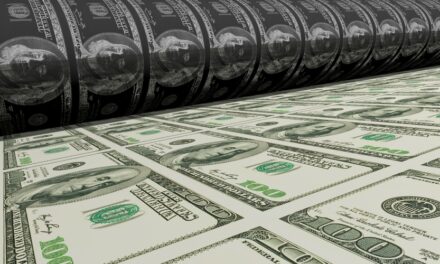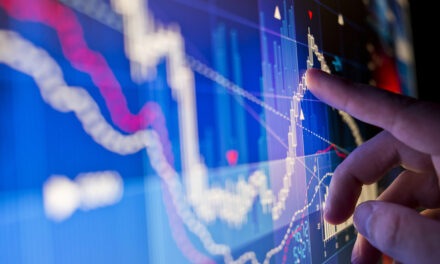Lately, attitudes toward the Federal Reserve Bank of the United States tend to fall into two camps.
On one side, you have investors making big money from the Fed’s extremely low interest rates and corporate credit market policies.
They love the Fed and advise the bearishly inclined not to fight it.
On the other side, you have old-school inflation worriers. They’re convinced the Fed’s so-called “money printing” will lead to higher prices.
Bizarrely, at a time of unprecedented joblessness, this crowd is still worried that easy money will lead to too much employment and thus rising wages.
But all this emphasis on the Fed, pro and con, is misplaced.
The real problem lies elsewhere … and if it ever gets resolved, investors can expect to see some real fireworks.
The Fed’s Great Experiment
Last week, Chairman Jerome Powell announced that the Fed will change the way it manages inflation.
There will be no more interest rate hikes in response to falling unemployment to head off inflation before it starts. Instead, it said it will wait until inflation occurs before raising rates…
As I explained in my Bauman Daily YouTube video last Friday, ever since the 1950s the Fed has been guided by an economic concept called the Phillips curve:

The Phillips curve assumes the main driver of inflation is rising wages. It further assumes that the official unemployment rate — which only measures people actually looking for a job — is an accurate measure of labor scarcity.
Ergo, if the employment rate begins to fall, don’t wait for inflation. Raise interest rates immediately to choke off economic activity and stop it before it starts.
The problem is the Phillips curve isn’t working as it used to. Unemployment fell to around 3% in 2019 and we didn’t get any meaningful inflation.
But the Fed isn’t abandoning the concept. It’s just conducting a real-world experiment to see at what level of unemployment that curve will manifest itself.
I like this experiment. I’ve long maintained that today’s labor market conditions are radically different from the period between World War II and the late 1970s.
In those days, the employment rate for economically active male workers was consistently high.
Workers in the biggest and most important industries tended to be unionized. That gave them the ability to build cost-of-living adjustments into their contracts.
But just like the Fed before its recent policy shift, these contracts didn’t wait for inflation to happen before they were triggered. Workers got automatic increases, which led to inflation. They were a self-fulfilling prophecy.
By contrast, today the labor force participation rate is at a historical low. Millions of people are no longer looking for work.
Millions more are employed in unsteady, low-paying “gig” jobs that don’t add much value to the economy. Intense competition for this kind of work keeps wages low.
Most importantly, the percentage of unionized workers in the private sector has fallen from over 30% in the 1950s to 6% today.
That explains why the Phillips curve doesn’t work anymore. Low headline unemployment numbers don’t reflect actual labor scarcity … and they certainly don’t reflect labor’s ability to demand higher wages.
But Wait, There’s More
In an opinion piece in The Wall Street Journal a few weeks ago, Greg Ip argued that the Fed is being asked to solve problems it wasn’t designed for.
Ip doesn’t have a problem with the Fed’s shift on inflation targeting.
But he’s worried that the Fed is increasingly being asked to address other problems, such as racial wage disparities, climate change and similar issues. Ip thinks this will lead the Fed to overshoot the target on inflation, causing recessions.
I agree with him that the Fed isn’t designed to address those issues, and it shouldn’t be asked to try. But his concern about inflation is misplaced.
Frankly, I don’t think anything the Fed can do is likely to lead to higher inflation.
That’s because inflation in the real economy comes from a combination of A: real scarcity of labor and B: too much money available in the real economy relative to national output.
The problem right now is that the Fed’s policy tools only allow it to pump new money into asset markets such as stocks and bonds.
It has no mechanism to get newly created money into the hands of ordinary people who spend money on real goods and services.
On top of that, there is an abundance of underemployed labor in the economy.
That’s why the Fed’s easy money policies aren’t producing inflation in the real economy … only in the stock market.
Whose Job Is It, Anyway?
The debate about the Fed obscures the real problem.
The only constitutional and statutory mechanism to introduce new money into the real economy is spending by the federal government. The Federal Reserve is neither authorized nor designed to do this.
Some new Fed money made its way into the real economy this year, but only indirectly. Those stimulus checks and extended unemployment benefits were thanks to money it lent to the Treasury Department.
That hasn’t caused inflation because almost all of it was spent on necessities such as food and rent, or put into savings … or the stock market.
But that could change very quickly if the federal government decides to change its ways.
Since the 1980s, the federal budget deficit has increased dramatically. But that’s not because of increased government spending. It’s because of continual tax cuts without corresponding cuts to spending.
If the federal government increased taxation on high earners and redistributed that revenue to low-income households — especially if it did so through work programs — the U.S. economy would light up like a Roman candle.
The big question is whether that would lead to inflation.
The Fed has decided to conduct an experiment to see whether changing its policies will lead to inflation.
Maybe it’s time for the federal government to do the same thing?
Kind Regards,

Editor, The Bauman Letter









